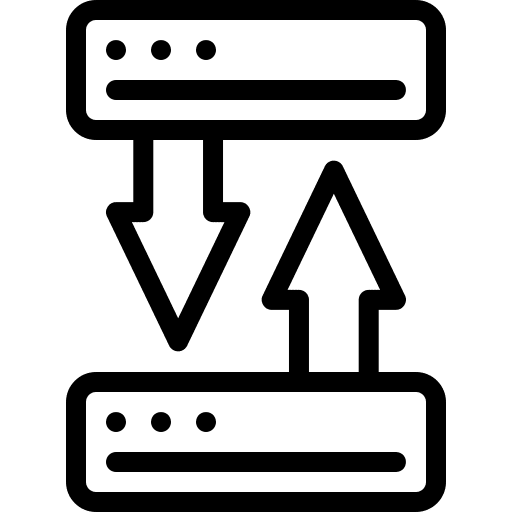Edit Content
A cost-effective hosting solution with exceptional performance, security, and versatility. OVH provide 70 Tbps of global network capacity, 37 datacenters implemented across 4 continents, and 44 redundant PoPs worldwide.


Infrastructure protection ensures infrastructure is secure from hackers, host and service security offers additional protection for your applications, and web security ensures your web services deliver flawless content.








The location of datacenters is a major factor for a hosting provider to consider. With an international clients base offering services across the globe, our solutions must be adaptable, and physically based as closely as possible to their users. Offering services in the country where you do business is a guarantee of trust, security and performance. This is why we have datacenters around the world, and continue to expand the geographical coverage of our solutions every day. You can find OVH datacenters in these countries: France, Canada, USA, Australia, Germany, Poland, the UK and Singapore.
OVH virtual private server service is highly reviewed and established with extensive positive feedback from various large companies such as Nutanix, Forcepoint LLC and Airbus. We are very comfortable using OVH services as our primary resource for our clients private server needs. In order to ensure the highest level of performance and security, we also provide configurations on the virtual private server and each of our client's websites. OVH's physical server is restricted, and all access is monitored and limited. Video surveillance and security ensure full control of each site twenty-four hours a day, seven days a week.


Dedicated hosting is an Internet hosting option in which a physical server (or servers) is dedicated to a single business client. The client has complete control over the machine, so they can optimize it for their unique requirements, including performance and security.
Shared hosting, also referred to as virtual hosting, is a way to host your website on a single physical server that also hosts additional sites. Within the server, there are software applications that make managing and accessing your website easy.
Both shared hosting and dedicated hosting hold the data for your website on a single server. When web users access your website from their browser, this server sends your data to them.
The difference between the two hosting types is the type of server on which your website is stored. With shared hosting, your website lives alongside others, which are neighboring users utilizing the same server. With dedicated hosting plans, your website has a server all to itself. There are distinct advantages and disadvantages to both. Learn the difference between shared hosting and dedicated hosting to choose the best option for your business.
Most blog owners, small businesses, and new websites use shared hosting because it’s extremely affordable when compared to other hosting types such as VPS hosting, dedicated hosting, etc.Shared hosting provides all users with has access to features including disk space, FTP accounts, monthly traffic, and additional add-ons offered by the host. Shared hosting is not ideal if you expect a sudden influx of traffic.
As your business grows, so does the traffic to your website or online applications.
In some cases, cloud servers or shared hosting may no longer meet your demands, and using a dedicated server may be the perfect solution.
You will get the full resources of single server. You don't need to worry about other websites obstructs up the server's CPU and RAM. With the dedicated server, you can be sure that bad scripts running on other websites.
Advantages of using the dedicated server are, Server resources are not shared, enhanced performance and security, flexibility and unique IP address.
We just need your login access for your current hosting provider. It's that simple!
Reach out to us to see if you qualify for FREE HOSTING MIGRATION. It's as simple as filling out the Contact Us form below.

We firmly believe that the internet should be available and accessible to anyone, and are committed to providing a website that is accessible to the widest possible audience, regardless of circumstance and ability.
To fulfill this, we aim to adhere as strictly as possible to the World Wide Web Consortium’s (W3C) Web Content Accessibility Guidelines 2.1 (WCAG 2.1) at the AA level. These guidelines explain how to make web content accessible to people with a wide array of disabilities. Complying with those guidelines helps us ensure that the website is accessible to all people: blind people, people with motor impairments, visual impairment, cognitive disabilities, and more.
This website utilizes various technologies that are meant to make it as accessible as possible at all times. We utilize an accessibility interface that allows persons with specific disabilities to adjust the website’s UI (user interface) and design it to their personal needs.
Additionally, the website utilizes an AI-based application that runs in the background and optimizes its accessibility level constantly. This application remediates the website’s HTML, adapts Its functionality and behavior for screen-readers used by the blind users, and for keyboard functions used by individuals with motor impairments.
If you’ve found a malfunction or have ideas for improvement, we’ll be happy to hear from you. You can reach out to the website’s operators by using the following email JonCoss@wawaipartners.com
Our website implements the ARIA attributes (Accessible Rich Internet Applications) technique, alongside various different behavioral changes, to ensure blind users visiting with screen-readers are able to read, comprehend, and enjoy the website’s functions. As soon as a user with a screen-reader enters your site, they immediately receive a prompt to enter the Screen-Reader Profile so they can browse and operate your site effectively. Here’s how our website covers some of the most important screen-reader requirements, alongside console screenshots of code examples:
Screen-reader optimization: we run a background process that learns the website’s components from top to bottom, to ensure ongoing compliance even when updating the website. In this process, we provide screen-readers with meaningful data using the ARIA set of attributes. For example, we provide accurate form labels; descriptions for actionable icons (social media icons, search icons, cart icons, etc.); validation guidance for form inputs; element roles such as buttons, menus, modal dialogues (popups), and others. Additionally, the background process scans all of the website’s images and provides an accurate and meaningful image-object-recognition-based description as an ALT (alternate text) tag for images that are not described. It will also extract texts that are embedded within the image, using an OCR (optical character recognition) technology. To turn on screen-reader adjustments at any time, users need only to press the Alt+1 keyboard combination. Screen-reader users also get automatic announcements to turn the Screen-reader mode on as soon as they enter the website.
These adjustments are compatible with all popular screen readers, including JAWS and NVDA.
Keyboard navigation optimization: The background process also adjusts the website’s HTML, and adds various behaviors using JavaScript code to make the website operable by the keyboard. This includes the ability to navigate the website using the Tab and Shift+Tab keys, operate dropdowns with the arrow keys, close them with Esc, trigger buttons and links using the Enter key, navigate between radio and checkbox elements using the arrow keys, and fill them in with the Spacebar or Enter key.Additionally, keyboard users will find quick-navigation and content-skip menus, available at any time by clicking Alt+1, or as the first elements of the site while navigating with the keyboard. The background process also handles triggered popups by moving the keyboard focus towards them as soon as they appear, and not allow the focus drift outside of it.
Users can also use shortcuts such as “M” (menus), “H” (headings), “F” (forms), “B” (buttons), and “G” (graphics) to jump to specific elements.
We aim to support the widest array of browsers and assistive technologies as possible, so our users can choose the best fitting tools for them, with as few limitations as possible. Therefore, we have worked very hard to be able to support all major systems that comprise over 95% of the user market share including Google Chrome, Mozilla Firefox, Apple Safari, Opera and Microsoft Edge, JAWS and NVDA (screen readers), both for Windows and for MAC users.
Despite our very best efforts to allow anybody to adjust the website to their needs, there may still be pages or sections that are not fully accessible, are in the process of becoming accessible, or are lacking an adequate technological solution to make them accessible. Still, we are continually improving our accessibility, adding, updating and improving its options and features, and developing and adopting new technologies. All this is meant to reach the optimal level of accessibility, following technological advancements. For any assistance, please reach out to JonCoss@wawaipartners.com